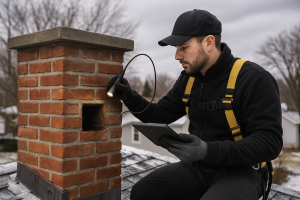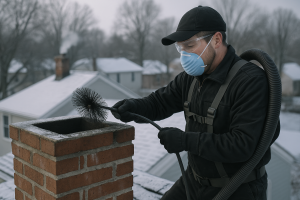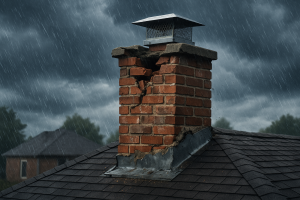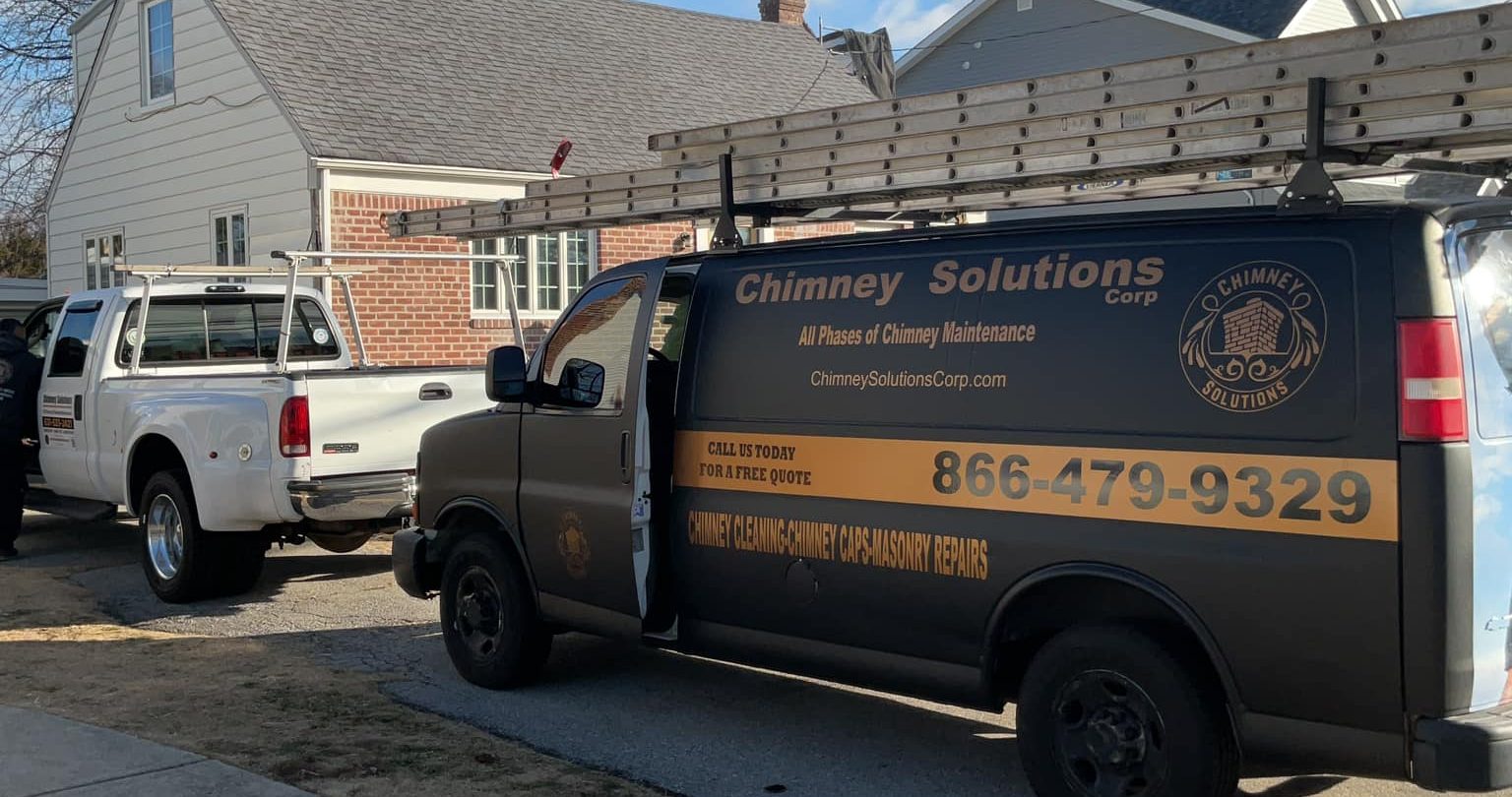Best Chimney Maintenance Tips for Long Island’s Coastal Climate
Long Island’s picturesque shores and salty air create unique challenges for chimney structures in Nassau and Suffolk counties. From moisture intrusion during heavy rains to corrosive salt spray, coastal weather can accelerate structural damage, promote creosote buildup, and lead to expensive repairs. Regular, proactive maintenance not only ensures chimney safety and peace of mind for homeowners but also safeguards indoor air quality and energy efficiency. In this guide, Chimney Solutions shares a wide range of expert tips—covering everything from inspections and sweeping schedules to DIY checks and when to call in skilled technicians—so your fireplace chimney remains in optimal condition year-round.
Understanding Long Island’s Coastal Climate and Chimney Challenges
Long Island sits between two major bodies of water—Long Island Sound and the Atlantic Ocean—exposing chimneys to high humidity, salt air, and frequent storm surges. Over time, salt air corrosion attacks mortar joints in masonry chimneys, while heavy rain and water intrusion can erode crowns and flashings. Chimney owners must recognize that coastal climate demands more rigorous maintenance than inland counterparts. According to the National Oceanic and Atmospheric Administration (NOAA), coastal humidity averages over 70%, which can accelerate creosote deposits and foster mold growth inside flues.
Importance of Professional Chimney Inspections
An annual chimney inspection by a certified technician is the cornerstone of any maintenance plan. Inspectors check for hidden structural issues, assess chimney liners, verify adequate venting system performance, and measure draft pressures (“column of water measured”) to ensure safe operation. The Chimney Safety Institute of America (CSIA) recommends Level 1 inspections annually for most households and Level 2 or 3 when real estate transactions or system modifications occur.
Chimney Sweep Services: Frequency and Benefits
Regular cleanings remove combustible creosote buildup and animal debris that can ignite and cause chimney fires. Coastal chimneys often require more frequent sweeping—sometimes twice per heating season—due to higher moisture levels that bind soot more persistently to flue interiors. Professional chimney sweep services also evaluate chimney crowns, caps, and flashing to identify costly damages before they escalate.
Identifying and Addressing Creosote Buildup
Creosote, the dark, sticky residue from wood smoke, poses one of the greatest potential hazards to chimney safety. In damp coastal environments, creosote can harden into glaze, resisting removal and increasing fire risk. Homeowners can look for glossy black deposits inside the firebox or a strong, smoky odor when the fireplace is idle. For stubborn buildup, chimney relining or Chimney Liner Replacement may be necessary to restore proper flue dimensions and prevent carbon monoxide poisoning.
Dealing with Water Damage and Intrusion
Water is a chimney’s worst enemy. Rainwater and melting ice can penetrate cracks in the chimney crown, deteriorate insulation material, and cause spalling of brick or stone. Salt-laden moisture further accelerates decay. Applying a breathable, waterproof sealant to masonry surfaces—and repairing cracked crowns promptly—prevents water from reaching vulnerable substrates. Proper roof repairs around the chimney base and ensuring proper drainage away from the wall pass-through system are equally critical.
Chimney Crown Repair and Maintenance
The chimney crown—the concrete or mortar slab at the top of your chimney—plays a crucial role in shielding your entire chimney system from harsh weather conditions. Positioned just beneath the chimney cap, the crown is often the first part of the chimney to face weather damage, especially in coastal regions like Nassau County where salt air, freeze-thaw cycles, and intense winds create a recipe for deterioration.
Cracks in the crown can quickly become a gateway for water stains, chimney damage, and hidden issues like mold growth or liner erosion. These cracks are often caused by thermal cycling—expansion and contraction due to temperature changes—as well as additional debris buildup and poor original installation that fails to meet industry standards.
Timely chimney crown repair using a high-strength, flexible mortar or resurfacing material helps prevent moisture intrusion and maintains the overall integrity of the chimney. Left unaddressed, a cracked crown may result in leaky chimney flues, internal liner corrosion, and even roof shingles damage due to constant dripping and freeze expansion.
Regular inspections in both spring and fall are highly recommended. These inspections can catch potential issues early and reduce cost of chimney repairs by preventing small cracks from evolving into structural concerns. Crown repairs, when done proactively, are far less expensive than Masonry Repair or full chimney rebuilds, which can exceed national averages for chimney repair costs.
In addition to protecting your chimney from environmental threats, a well-maintained crown improves overall air quality standards in your home by keeping internal components dry and free of mold. Homeowners can schedule crown inspections alongside Annual inspections, attic cleaning, or even air conditioning service visits for efficient home upkeep.
By including chimney crown checks in your regular chimney maintenance plan, you’ll benefit from fewer surprises, peace of mind knowing your fireplace is structurally sound, and fewer safety hazards during the heating season.
Chimney Liner Replacement and Relining
The chimney liner serves as the inner protective layer of the chimney flue, insulating combustible materials from intense heat while directing smoke and harmful gases like carbon monoxide safely out of the home. It’s not only a vital component for fire safety—it’s required by most stringent requirements in national and local codes, especially in high-risk weather zones like Long Island.
In coastal climates, chimney issue frequency increases due to humidity, moisture intrusion, and animal intrusion—especially in older chimneys that haven’t been upgraded to modern, industry-standard liner materials. Clay tile liners, commonly found in older homes, often deteriorate over time, leading to chimney damage, poor draft, and carbon monoxide buildup that can affect indoor air quality.
Whether you’re operating a traditional fireplace or an electric fireplace, liner integrity is critical for all combustion systems. A damaged or improperly sized liner can cause excessive creosote buildup, increase safety risks, and even affect adjacent systems like air conditioning ducts through heat bleed or airflow interference.
Chimney relining involves installing a new stainless steel or cast-in-place liner that adheres to air quality standards while enhancing overall draft and heating efficiency. This service can often be bundled with other chimney cleaning services such as Regular Chimney Cleaning, chimney cap installation, and flue inspection to minimize additional costs and streamline maintenance.
Relining is often advised during:
- Restoration following weather damage or chimney crown repair
- Resolving draft complaints or persistent odors
- Upgrading from wood to gas systems
- Bringing flues up to code for real estate sales or insurance compliance
Though chimney liner replacement may seem like a significant investment, it ultimately reduces long-term chimney repair costs, improves energy efficiency, and ensures that combustion gases—including carbon monoxide—are safely vented outdoors.
Maintaining a functional chimney through relining supports fireplace services, reduces safety hazards, and enhances your level of service from heating systems. Homeowners who invest in liner upgrades often enjoy lower utility bills, fewer emergency service calls, and better resale value thanks to documented regular maintenance.
Selecting High-Quality Materials for Coastal Exposure
Not all masonry mortars or metals fare well near saltwater. Use marine-grade stainless steel for liners and caps, and choose portland-cement blends with added polymers for crowns. When installing new brick or stone, select low-absorption masonry rated for coastal climates to minimize water uptake. Investing in high-quality materials upfront pays dividends by extending service life and reducing frequent maintenance.
Proper Ventilation and Draft System Maintenance
Coastal winds can create unpredictable downdrafts that force smoke back into living spaces. Maintaining proper ventilation involves checking that chimney flues are clear, verifying draft system performance (ensuring draft systemshall operate within code limits), and confirming that Mechanical Draft Systems—if present—comply with 804.3.8 Mechanical Draft Systems requirements. Routinely testing with a small wood fire or draft gauge prevents surprises during winter storms.
Chimney Cap Installation for Coastal Homes
A sturdy chimney cap is the most effective barrier against rain, debris, and animal encroachment. Coastal homes should opt for caps with a durable mesh screen, corrosion-resistant fasteners, and a welded stainless-steel skirt to fit vertical terminations or horizontal terminations on multi-flue chimneys. Proper cap installation ensures the chimney outlet remains clear and extends the life of the chimney system.
Seasonal Maintenance: Preparing for Harsh Weather
Before winter’s first freeze and again in spring, schedule a quick visual check: remove leaves from spark arrestors, examine crowns for new cracks, and confirm that flashing around the chimney embraces the roof ridge without gaps. Seasonal maintenance prevents moisture from getting trapped over summer storms and protects against ice damage in winter.
Managing Salt Air Corrosion in Masonry Chimneys
Salt crystals carried by ocean breezes lodge in porous masonry, then expand and contract with temperature shifts, causing surface flaking. Applying a breathable waterproofing sealer every two to three years and using insulation material behind chase covers slows corrosion. Additionally, ensuring adequate attic ventilation reduces humidity that drives salt deposition inside flues.
Ensuring Chimney Safety: Smoke Detectors and Carbon Monoxide Risks
A well-maintained chimney works in concert with home safety systems to protect families. Position smoke detectors near the fireplace area, and install a separate carbon monoxide detector within 10 feet of any room containing a vented appliance. These monitors provide an audible warning if smoke backdrafts or gases accumulate, giving homeowners critical time to intervene.
DIY Maintenance Tips vs. When to Hire Expert Technicians
Homeowners can perform simple checks—such as clearing minor debris, inspecting visible mortar, and testing draft—but any sign of structural damage, persistent odor, or unusual sounds warrants a call to expert technicians. Chimney Solutions’ experienced technicians hold CSIA certification and carry insurance, ensuring repairs—from chimney crown repair to chimney liner replacement—meet industry and safety standards.
Additional Services: Air Duct Cleaning and Dryer Vent Maintenance
While focusing on chimneys, don’t overlook adjacent systems that share your home’s exhaust paths. Professional air duct cleaning and dryer duct maintenance reduce fire risks from lint accumulation and improve overall HVAC efficiency. Bundling these services with your chimney sweep often yields competitive pricing and ensures optimal condition for all venting systems.
Choosing Trusted Local Chimney Maintenance Services
Long Island homeowners have access to a wide range of local providers. Look for companies with positive reviews on community platforms, CSIA credentials, and transparent pricing—whether you’re in Oyster Bay, Glen Cove, or the Hamptons. Chimney Solutions offers tailored maintenance plans, seasonal specials, and a satisfaction guarantee, giving property owners confidence in every service call.
Conclusion: Commitment to Excellence and Long-Lasting Results
Maintaining a functional chimney in Long Island’s coastal climate demands ongoing attention, quality materials, and professional expertise. From routine inspections and regular cleanings to strategic upgrades like stainless-steel caps and advanced liners, each measure contributes to chimney safety, energy efficiency, and reduced potential hazards. By partnering with Chimney Solutions, building owners gain the peace of mind that comes with comprehensive care, transparent communication, and a commitment to customer satisfaction. Schedule your inspection or maintenance today—and ensure your fireplace chimney stands strong against coastal weather for years to come.



